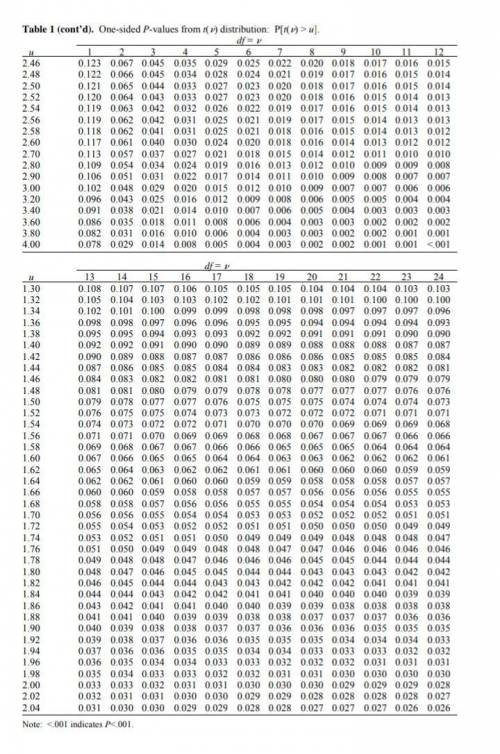
Mathematics, 28.07.2020 16:01, sahaitong2552
The true average diameter of ball bearings of a certain type is supposed to be 0.5 in. A one-sample t test will be carried out to see whether this is the case. What conclusion is appropriate in each of the following situations?
(a) n = 15, t = 1.66, a = 0.05
a. Reject the null hypothesis. There is sufficient evidence that the true diameter differs from 0.5 in
b. Reject the null hypothesis. There is not sufficient evidence that the true diameter differs from 0.5 in
c. Do not reject the null hypothesis. There is sufficient evidence that the true diameter differs from 0.5 in
d. Do not reject the null hypothesis. There is not sufficient evidence that the true diameter differs from 0.5 in
(b) n = 15, t = 1.66, a = 0.05
a. Reject the null hypothesis. There is sufficient evidence that the true diameter differs from 0.5 in
b. Reject the null hypothesis. There is not sufficient evidence that the true diameter differs from 0.5 in
c. Do not reject the null hypothesis. There is sufficient evidence that the true diameter differs from 0.5 in
d. Do not reject the null hypothesis. There is not sufficient evidence that the true diameter differs from 0.5 in
(c) n = 26, t = 2.55, a = 0.01
a. Reject the null hypothesis. There is sufficient evidence that the true diameter differs from 0.5 in
b. Reject the null hypothesis. There is not sufficient evidence that the true diameter differs from 0.5 in
c. Do not reject the null hypothesis. There is sufficient evidence that the true diameter differs from 0.5 in
d. Do not reject the null hypothesis. There is not sufficient evidence that the true diameter differs from 0.5 in
(d) n = 26, t = 3.95
a. Reject the null hypothesis. There is sufficient evidence that the true diameter differs from 0.5 in
b. Reject the null hypothesis. There is not sufficient evidence that the true diameter differs from 0.5 in
c. Do not reject the null hypothesis. There is not sufficient evidence that the true diameter differs from 0.5 in
d. Do not reject the null hypothesis. There is sufficient evidence that the true diameter differs from 0.5 in
You may need to use the appropriate table in the Appendix of Tables to answer this question.

Answers: 1
Other questions on the subject: Mathematics


Mathematics, 22.06.2019 00:10, ruddymorales1123
Me i need ! find the asymptote and determine the end behavior of the function from the graph. the asymptote of the function is= blank 1 . for very high x-values, y =blank 2 options for blank 1 x=2 x=-2 x=3 x=-3 blank 2 options moves towards negative infinity moves toward the horizontal asymptote moves toward the vertical asymptote moves toward positive infinity
Answers: 1

Mathematics, 22.06.2019 02:00, castellon67
The half-life of a certain material is 0.004 second. approximately how much of a 20-gram sample will be left after 0.016 second? a. 5 grams b. 16 grams c. 0.32 gram d. 1.25 grams
Answers: 3
Do you know the correct answer?
The true average diameter of ball bearings of a certain type is supposed to be 0.5 in. A one-sample...
Questions in other subjects:

Chemistry, 02.12.2021 01:00

Mathematics, 02.12.2021 01:00

Mathematics, 02.12.2021 01:00





Mathematics, 02.12.2021 01:00









